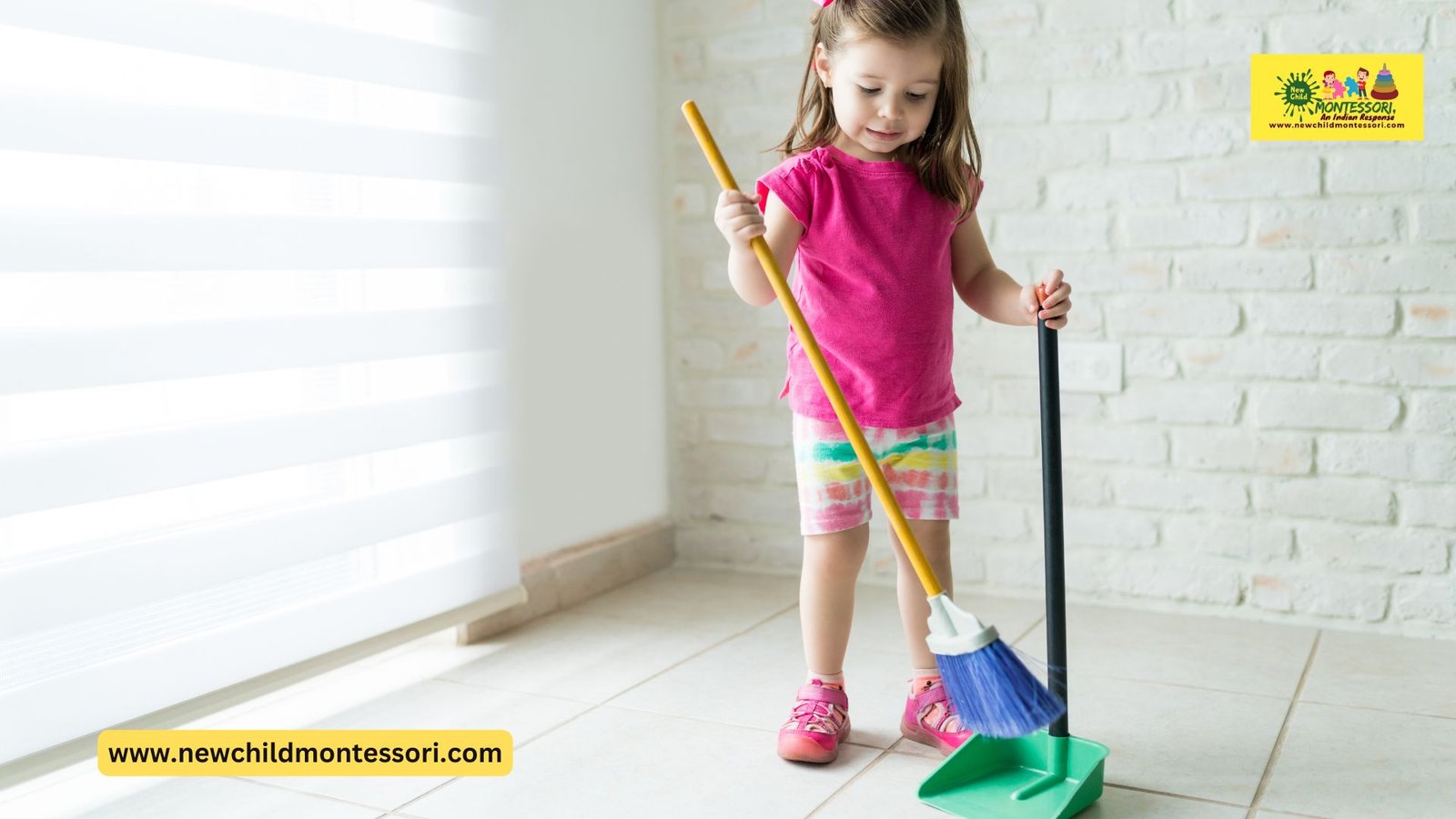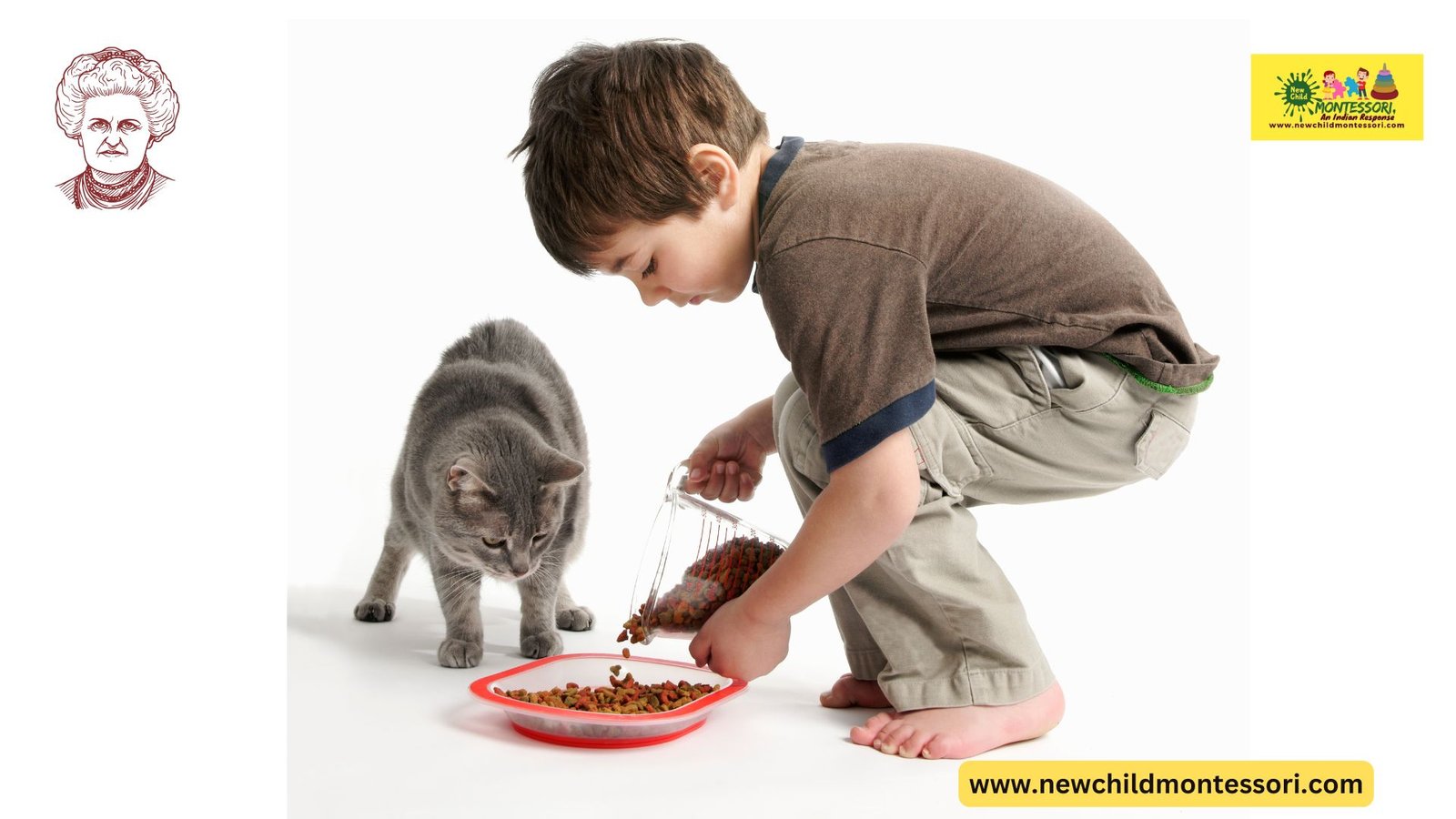At the beginning of this article, I am going to offer you a disclaimer: I am not a Montessori mom, but a dad and an experienced Montessori teacher. Furthermore, I have a complete Montessori-inspired home where I raise my kids following her education. In addition, my wife is dedicated to bringing up our children following the same educational method. Thus, in this article, I will show you how our collective efforts contribute to getting our kids naturally involved in chores. In addition, I will share a guide to age-appropriate chores so you can set your child up for success at any stage.
Why Getting Kids Involved In Chores Matters More Than You Think
You may think if our kids help around the house, it will lighten our load—but the real magic runs deeper.

In Harvard’s “Study Of Adult Development”, one of the longest—running studies of human happiness and life satisfaction, the authors observe that kids who do chores grow up to become more successful adults- with higher self-esteem, stronger work habits, better relationships, and greater overall happiness.
Dr.Maria Montessori, the visionary educationist, realized this a century ago. In her observation, she found that children naturally crave meaningful work. Furthermore, if children are endowed with real-life responsibilities such as wiping up spills or sorting laundry, they feel capable, connected, and confident.
In addition to building responsibility, chores build motor skills, problem-solving abilities, self-reliance, and a deep sense of belonging.

12 Montessori-Approved Tips to Inspire Willing Participation (Not Nagging)
Here’s how Montessori moms do to bring more cooperation into their homes:
- Work with your child: Assist your children while performing different chores rather than assigning tasks from a distance.
- Demonstrate tasks step-by-step: Go slow and break even simplest of the simple tasks in easy steps.
- Chunk big chores into small wins: “Clean your room” becomes “Put laundry in hamper,” “Tidy toys,” and “Make the bed.”
- Use positive language: Say “Let’s care for our homes” instead of “You have to do your chores.”
- Let go of perfection: Focus on effort and progress, not flawless results.
- Provide child-sized tools: A mini broom or small spray bottle empowers little hands.
- Be patient: Mastery takes time — celebrate small successes.
- Make chores playful: Add music, set a timer, or team up for fun challenges.
- Match chores to interests: Animal lovers can feed pets; garden fans can water plants.
- Never use chores as punishment: Keep chores positive — they’re contributions, not consequences.
- Use chore charts (especially for siblings): They help ensure fairness and reduce rivalry.
- Model a positive attitude: Your energy around chores sets the tone.

What Chores Are Right for Each Age?
Here’s a simple guide:
Ages 2–3: The “Me Do It” Stage
- Putting toys away
- Feeding pets (with supervision)
- Wiping up small spills
- Washing fruits
- Putting dirty clothes in a hamper
- Placing napkins on the table
Ages 4–5: Building Coordination
- Setting the table
- Watering plants
- Sorting laundry by color
- Making their bed (with help)
- Putting away clean clothes
- Simple meal prep with supervision

Ages 6–8: Gaining Independence
- Sweeping floors
- Fully making their bed
- Loading the dishwasher
- Folding laundry
- Preparing simple meals
Ages 9–12: Taking Responsibility
- Vacuuming
- Washing dishes
- Helping prepare full meals
- Cleaning bathrooms with guidance
- Managing their own laundry
- Caring for pets independently

Teens: Real-World Readiness
- Deep cleaning tasks
- Grocery shopping
- Cooking family meals
- Yard work
- Basic home maintenance

Sumanta De is an educator. He has been teaching students for more than 16 years following the principles of Dr.Maria Montessori. He has a 7-year-old son and a 5-year-old daughter.
He is nurturing his children abiding by the principles of Dr.Maria Montessori. His passion for Montessori methods goes beyond the classroom.
Hence, he shares his experiences and insights through a dedicated Montessori blog and a YouTube channel under the name “NewChild Montessori”. He aims to offer valuable guidance to both parents and educators.
Education: M.A. English, Masters in Child Psychology & Bachelor’s Degree in Montessori Teachers Training